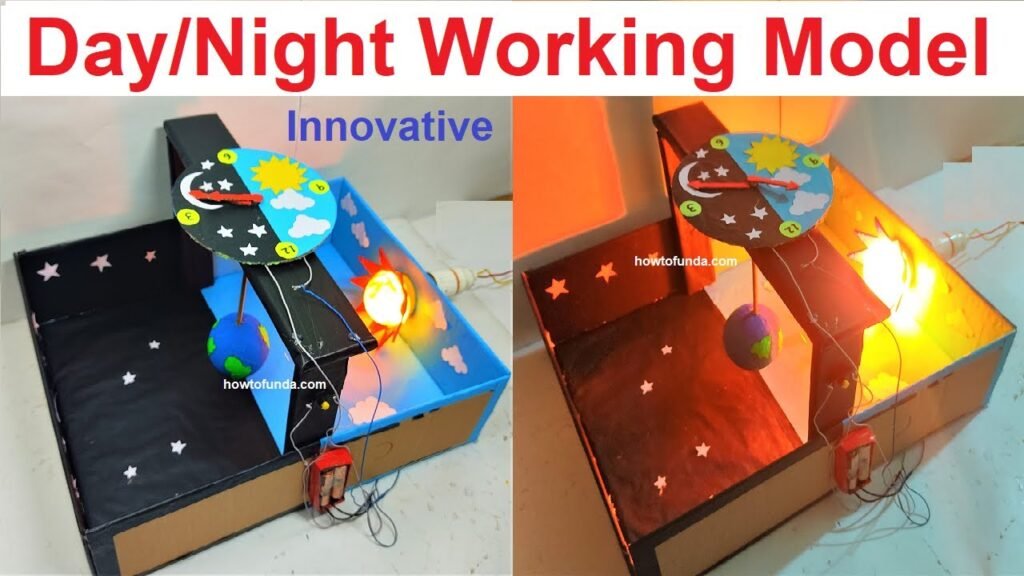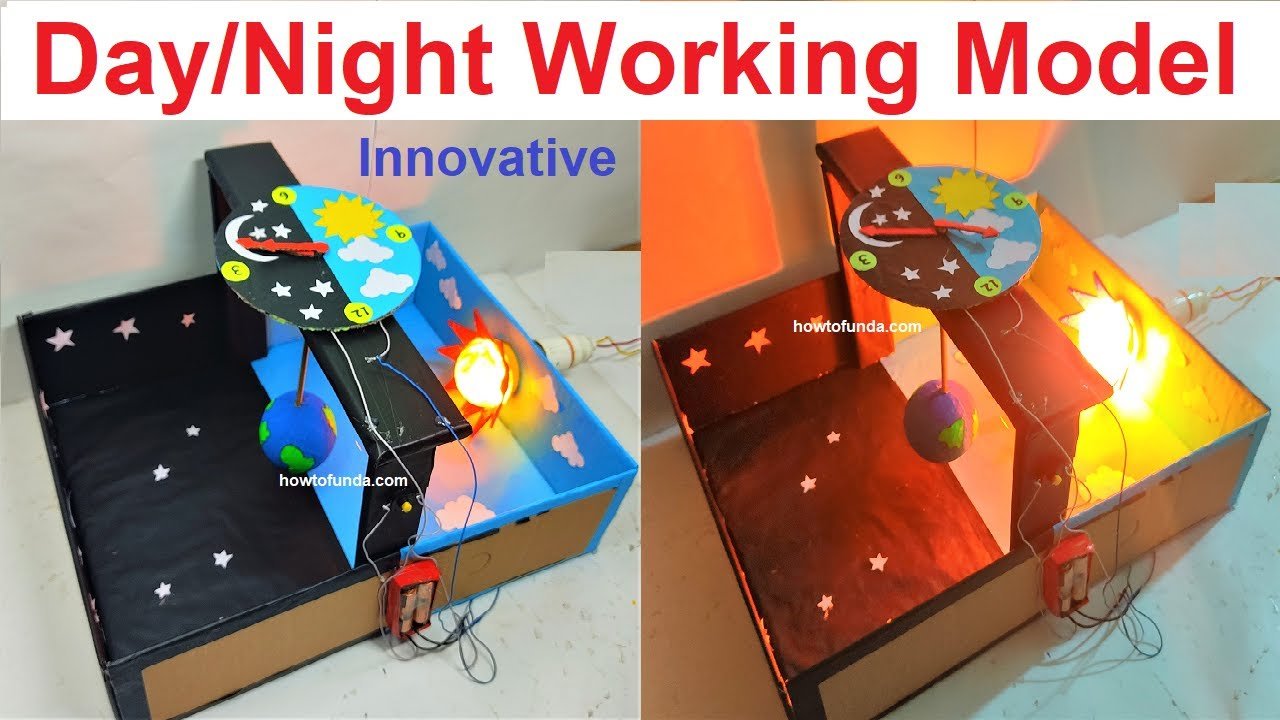Have you ever wondered why it gets dark at night and bright in the day? The answer lies in how our Earth moves in space. In this project, we’ll create a simple working model to understand why we experience day and night.
A day and night working model is a simple educational tool used to demonstrate and explain how the rotation of the Earth on its axis causes the cycle of day and night.
This model helps visualize the concept of how one half of the Earth is illuminated by the sun, resulting in daytime, while the other half is in darkness, experiencing nighttime.

We’ll use a few basic materials to represent the Earth and the Sun. Let’s dive in and explore the fascinating phenomenon of day and night!
Materials Needed:
- A flashlight (to represent the Sun)
- A globe or a ball (to represent the Earth)
- A marker or a piece of tape
- A dark room or a space where you can control the lighting
- DC Motor for globe rotation
- Battery
- Cardboard and color paper
how to make earth day and night working model
Step 1: Setting Up the Earth (Globe):
- Begin by placing the globe in the center of the room. This globe will represent our Earth.
Step 2: Marking a Starting Point:
- Use a marker or a piece of tape to mark a spot on the globe’s surface. This spot will represent the location where you are standing.
Understanding the Earth’s Rotation:
Now, let’s simulate the Earth’s rotation to see how day and night occur.
Step 3: Turn Off the Lights:
- In a darkened room, turn off all the lights. This will help us see the model clearly.
Step 4: Using the Flashlight (Sun):
- Hold the flashlight (our “Sun”) at a distance from the globe. Shine the light onto the marked spot (your location) on the globe’s surface.
- Observe how the light from the flashlight illuminates one side of the globe. This side represents the “daytime” on Earth.
- Notice that the opposite side of the globe remains in shadow, representing the “nighttime.”
Step 5: Rotating the Earth:
- While keeping the flashlight in the same position, gently rotate the globe. Imagine it’s turning on an imaginary axis running through its center.
- As you rotate the globe, notice how the marked spot (your location) moves from the illuminated side (day) to the shadowed side (night), and vice versa.
- This rotation of the Earth is what causes day and night to occur. When your part of the Earth faces the Sun, it’s daytime. When it turns away, it’s nighttime.
Understanding the Day and night working Model:
The model demonstrates the Earth’s rotation on its axis. The side facing the flashlight (Sun) experiences daylight, while the opposite side remains in darkness, creating night. This rotation is why we have a cycle of day and night.
How to explain day and night working model
- Rotation of the Earth:
- Explain that the Earth rotates on its axis. Hold the pencil or dowel rod and gently spin the Earth to demonstrate this rotation. Emphasize that one complete rotation takes approximately 24 hours, causing day and night.
- Daytime:
- Position the flashlight so that it directly illuminates one side of the Earth. Explain that this side experiences daylight, which we call “day.”
- Nighttime:
- Turn off the flashlight or position it so that it doesn’t directly illuminate the other side of the Earth. Explain that this side is in darkness, experiencing nighttime.
- Effect of Earth’s Tilt:
- If you want to introduce the concept of seasons, you can tilt the Earth slightly on its axis and explain how this tilt affects the angle of sunlight, leading to different seasons.
- Revolution around the Sun (Optional):
- You can further explain that while the Earth rotates on its axis, it also revolves around the Sun. This revolution takes approximately 365.25 days, leading to a year.
- Interactive Demonstration:
- Encourage your audience to participate. Let them take turns spinning the Earth and positioning the flashlight to simulate day and night.
Conclusion:
Through this simple working model, we’ve seen how the Earth’s rotation creates the cycle of day and night. This natural phenomenon is a result of our planet’s movement in space. It’s a fascinating aspect of our world that we experience every day!

